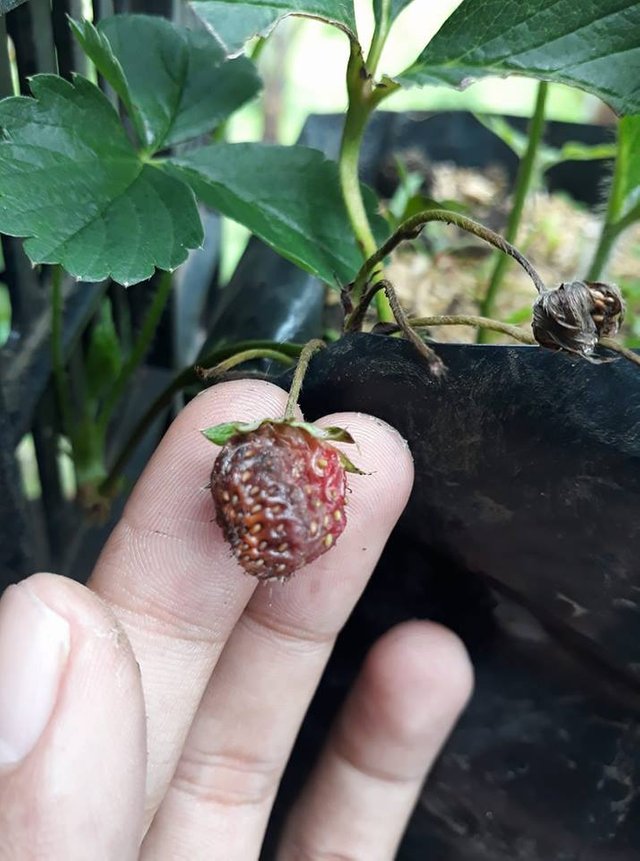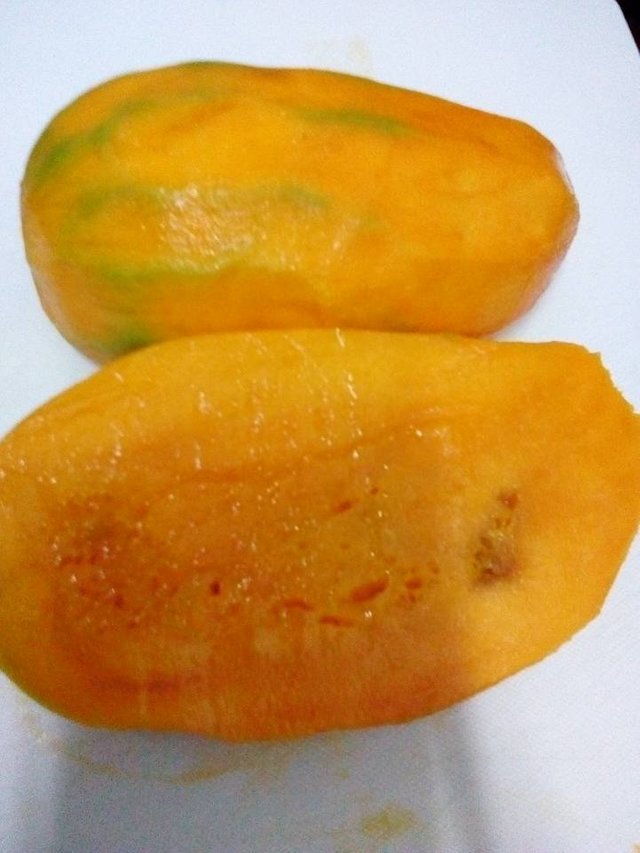Explanation why fruit can rot
Rotten fruit is a state where the fruit changes color and shape so the quality of the fruit becomes very bad. For commodities that are harvested fruit, this problem becomes a very serious problem because it can cause crop failure up to 100%.
Rotten fruit can attack any commodity. From chili, tomatoes, eggplant, papaya, mango and thousands of other fruit plants. The cause of fruit rot also varied, ranging from nutrient deficiency, pest attack (fruit fly), bacteria to fungal attack. To proceed to how proper handling for rotting fruit, we must first know the cause of fruit rot.
This time, let's discuss the fruit rot caused fungus. Here are some types of fungi that can cause foul rot.
Colletotrichum sp
Diseases caused by the fungus Colletotrichum sp are called anthracnose or patek. This mushroom can also attack several types of commodities such as chili, tomato, cocoa, sorghum, corn, mango, avocado, potatoes and more.
The characteristics of plants affected by anthracnose disease are circular patches in the fruit. The concave circle is brown at its center and light brown all around it. In severe attacks, the circle will expand, causing the rotten fruit to dry and will fall to the ground.
Anthracnose spreads through the wind and water. So penyeberannya can quickly occur.
To prevent spreading, make sure the plant has enough nutrients. Plants sufficient nutrients known leih resistant to disease attacks.
If the plants have already been attacked, then the use of fungicide can not be avoided. There are several kinds of active pesticide ingredients that can be used. Some of them are Trichoderma sp, benomyl, metalaxyl, Ciproconazole, propineb, copper hydroxide, and others.
Phytophpthora sp
Phytophpthora sp has a wide range of hosts, can attack hundreds of plant species including from various family. To breed, this fungus requires a certain temperature and humidity. The development of the disease is higher at the optimum temperature of 31 degrees Celsius.
Some commodities that can be attacked by this fungus include papaya, chili, tomato, sawo, durian, soursop, pineapple, watermelon, melon, guava, passion fruit, avocado, and many more. This fungus can also attack tubers such as potatoes that cause potato tubers to rot.
The characteristics of plants that attacked this fungus could be the fruit has a brown spots that look wet. These spots will expand and make the whole fruit turn brown and decompose. In addition to fruit, we can find some more symptoms in other plant parts. As in the petiole will begin to wither and rot. The stem of the plant will also dry up and rot to death.
To avoid further outbreaks of the disease, it is advisable to take non-host crop rotations, such as corn, rice, or beans to break the life cycle of this fungus. The recommended fungicide for the control of this disease is by utilizing the biological agents Trichoderma sp. Planting plant varieties that are resistant to the disease is also recommended.
Botrytis sp
The disease is attacked by fungus is commonly called gray mold or rot gray mold. This fungus is known to attack strawberries, tomatoes, almonds, persimmons, oranges, avocados, and more. Symptoms of plants that attacked this fungus will show the leaves that will berbercak dry chocolate. Similarly, on the crown of interest. In severe attacks, the crown of the flower will be dry and fall. The fruit will rot before cooking.
Rotten fruit is also classified as post-harvest disease because of rotten symptoms occur or appear when the fruit is in transport or when the fruit in storage. The fungal fungus will initially become hard and then soft and soft. Then the fruit becomes rotten bonyok and the whole skin of the fruit will be covered with gray flour.
In the effort of control, can be more attention again nitrogen fertilizer during the growth period with the intention to reduce the growth of new shoots and fruit high water content. At harvest and postharvest, storage of fruit is cultivated with good sanitation. The use of fungicides so far has not been able to reduce the attack of this fungus.
Rhizopus sp
Rhizopus fungus is the cause of rotten disease in grapes, tomatoes, cashew nuts, durian, melon, watermelon, orange, jackfruit, papaya and so on. Symptoms that arise also vary depending on the commodities that are attacked.
In oranges for example, the early symptoms of pale yellow or yellow furrowed spots. Spots develop into rotten fruit then covered with thin flour black or gray. In jackfruit, the initial attack is the formation of a gray-colored myceline which then becomes dark.
In papaya, Rhizopus will only attack mature fruit that has been injured. Whole raw fruit that is still healthy and not injured will not be attacked,unlike the Phytophthora that attack the fruit at all levels of maturity and unharmed fruits. Control efforts that can be done is to be careful on the fruit, do not get hurt. This is because the fungus is attacked when the wound occurs, both at the time of picking, packing, and storage. Ants and ladybirds that can be carriers of these mold spores can inflict wounds on the fruit to be eradicated. Spraying of bordo puree fungicide is also strongly recommended to suppress this mushroom population every three weeks during flowering and early fruit formation. Phomopsis sp This fungus causes a rotten fruit called black cancer. Ordinary attacking tomatoes, watermelon oranges, srikaya, eggplant chili and so forth. Phopmosis phenomenon in the form of citrus yellowish-brown spots around the tip of the base of the fruit becomes tough and hard. In plants eggplant-induced symptoms that result in the rot of blackish-brown fruit at the base of the fruit. In the dry state, the rotten fruit will be covered with black flour. Recommended control is by spraying bordo slurry. Spraying fruit before harvest with benomyl is also recommended. Alternaria sp Alternaria is a fungus that attacks several commodities such as apples, peppers, oranges, tomatoes, and some other plants such as cabbage and onions. Symptoms seen in tomatoes in the form of V or just a small black spot black around the base of the fruit (the fruit stalk) is black. Alternaria symptoms in oranges are similar to anthracnose attacks, but with distinct spore characteristics in the circular sections. In its control it is recommended to use the biological agent Trichoderma sp. Can use active propinep fungicide. To rotate plants that are not host of this fungus is also so alternative to stop the development cycle of Alternaria fungus.

